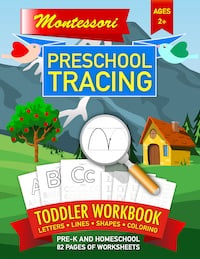The Ultimate Guide to Building a Montessori Classroom: Best Supplies, Materials, and Decor
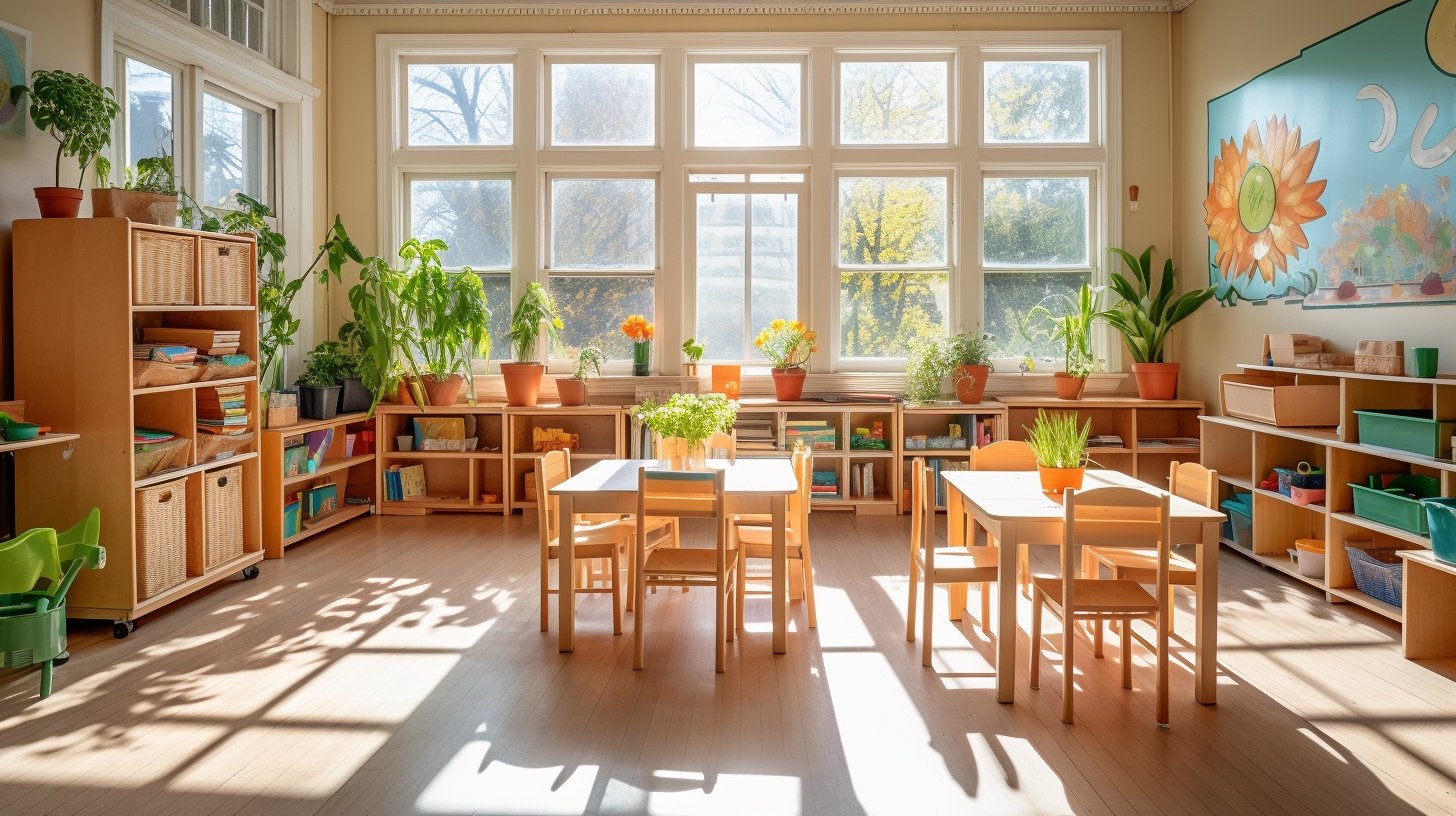
Introduction
The Montessori method, a revolutionary approach to education, has been transforming the way children learn for over a century. Rooted in the belief that children are naturally curious and eager to learn, this method emphasizes self-directed learning, hands-on activities, and collaborative play. At the heart of this educational approach is the classroom environment. Unlike traditional classrooms, a Montessori classroom is meticulously designed to cater to the child's innate desire to explore, discover, and grow.
This article is your definitive roadmap to constructing the quintessential Montessori classroom. The ultimate guide for educators, it meticulously covers every facet of the Montessori environment. From the foundational principles set by Maria Montessori herself to the intricacies of classroom layout, from the must-have furniture tailored for young learners to the essential equipment that stimulates their senses, and even diving into the modern integration of technology while preserving Montessori traditions — this guide leaves no stone unturned. Whether you're a seasoned Montessori educator or just embarking on this enlightening journey, you'll find invaluable insights ranging from practical life materials to sensorial engagements, and from fostering creativity through art to embracing the rhythms of music. Let's embark on this transformative journey together and craft a classroom that truly embodies the spirit of Montessori education!
Maria Montessori, the visionary behind this method, once said, "The environment must be rich in motives which lend interest to activity and invite the child to conduct his own experiences." This statement underscores the significance of the classroom setting in a Montessori education. Every piece of furniture, every material, and even the layout plays a pivotal role in facilitating the child's learning journey. As we journey through this guide, we'll uncover the philosophy behind the Montessori method, the key elements of a Montessori classroom, and the essential equipment, furniture, and accessories that make it complete.
Whether you're a seasoned Montessori educator looking to revamp your classroom or a newbie eager to embrace this method, this guide promises to be your compass. Let's embark on this enlightening journey together, exploring the intricacies of building a classroom that truly embodies the spirit of Montessori education.
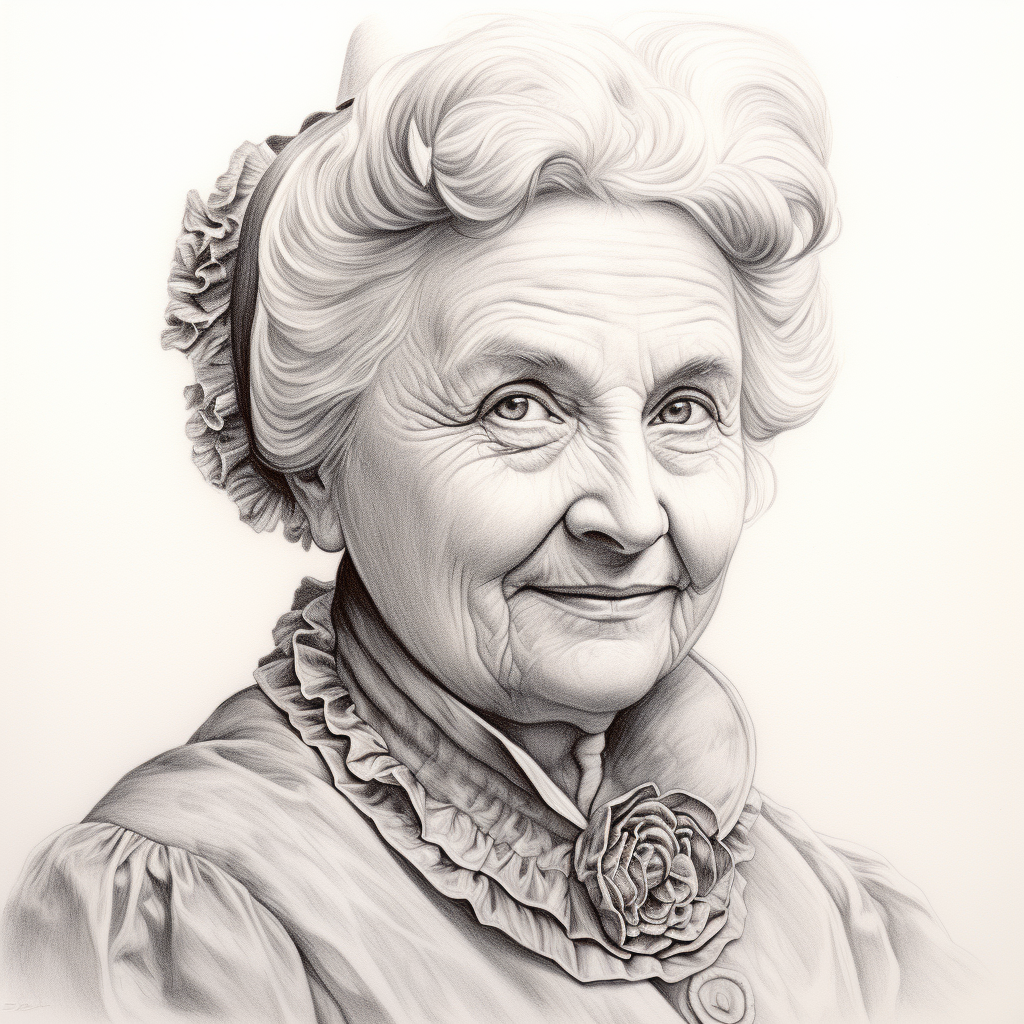
A Brief History of Maria Montessori and Her Educational Approach
Maria Montessori, an Italian physician and educator, pioneered the Montessori method in the early 20th century. Her observations of children, especially those from disadvantaged backgrounds, led her to believe that traditional education systems were stifling the natural curiosity and potential of young minds. Instead of being passive recipients of knowledge, Montessori saw children as active participants in their own learning journey. She envisioned a system where children could explore and discover at their own pace, guided by their interests and innate abilities.
Montessori's first "Casa dei Bambini" or "Children's House" was established in Rome in 1907. Here, she introduced a range of innovative teaching materials and techniques, many of which are still in use today. The success of this experimental classroom garnered international attention, leading to the global spread of the Montessori method.
Key Principles of the Montessori Method
The Montessori philosophy is underpinned by several core principles that differentiate it from traditional educational approaches:
- Child-Centered Learning: Every child is unique, with their own interests, pace, and learning style. Montessori classrooms are designed to cater to these individual needs, allowing children to choose activities that resonate with them.
- The Prepared Environment: The classroom is meticulously organized, with materials and furniture tailored to the child's size and developmental stage. This environment encourages independence, exploration, and self-directed learning.
- The Role of the Teacher: In Montessori education, the teacher is more of a guide or facilitator than a traditional instructor. They observe the children, understanding their needs, and then provide the necessary resources or interventions to support their learning.
- Hands-On Learning: Montessori believed in the power of tactile experiences. Her classrooms are filled with materials that children can touch, manipulate, and explore, fostering a deeper understanding of concepts.
- Respect for the Child: This principle is foundational to the Montessori approach. Children are treated with respect, given the freedom to make choices, and are trusted to take responsibility for their actions.
The Lasting Legacy of Montessori Education
Over a century after its inception, the Montessori method continues to thrive, with thousands of schools worldwide embracing its principles. The enduring popularity of this approach is a testament to its effectiveness. Numerous studies have shown that Montessori-educated children often outperform their peers in traditional schools, not just academically, but also in terms of social skills, creativity, and self-confidence.
The Global Spread and Modern Adaptations
While the core principles of Montessori education remain unchanged, modern Montessori schools often incorporate contemporary research and technological advancements into their curriculum. This fusion of traditional Montessori methods with modern innovations ensures that children receive a holistic education, preparing them for the challenges of the 21st century.
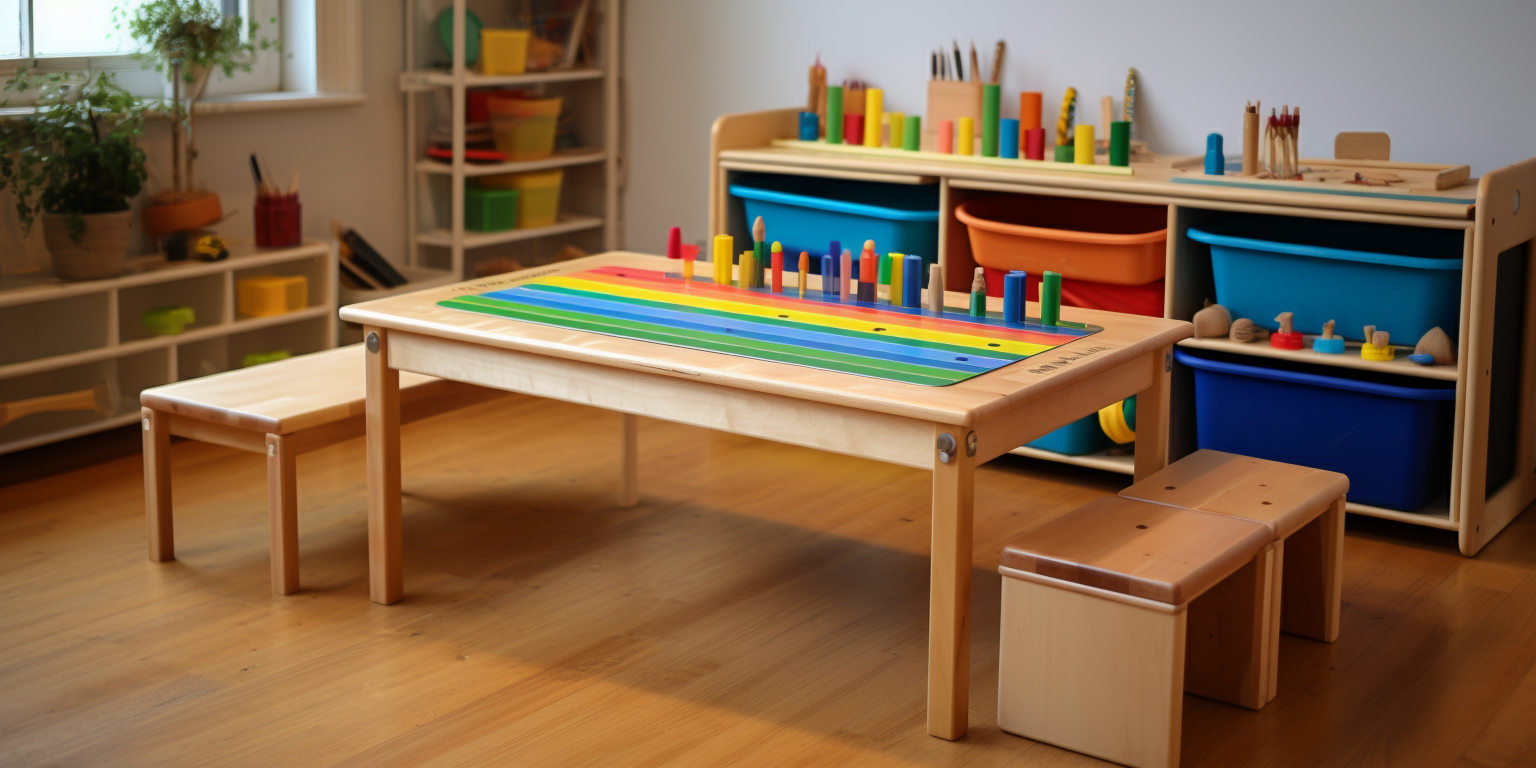
The Montessori Classroom Layout
The Importance of a Prepared Environment
The Montessori classroom, often referred to as the "prepared environment," is a sanctuary of exploration and discovery. Every element, from the placement of the shelves to the choice of materials, is intentional. This environment is crafted to be aesthetically pleasing, orderly, and reflective of the real world, ensuring that it resonates with the child's natural curiosity and desire for independence. The prepared environment is not just a physical space but also an atmosphere of respect, love, and understanding, where children feel safe to take risks, make mistakes, and learn at their own pace.
Zones and Areas: The Five Pillars of Montessori Learning
A Montessori classroom is typically divided into five key areas, each catering to a specific domain of learning:
- Practical Life: This area is foundational to the Montessori classroom. It offers activities that mirror everyday life, such as pouring, buttoning, and sweeping. These tasks not only teach children essential life skills but also enhance their motor skills, concentration, and sense of order.
- Sensorial: As the name suggests, the sensorial area engages all five senses. With materials like the color tablets, sound boxes, and texture fabrics, children refine their sensory perceptions, laying the groundwork for more abstract learning in the future.
- Mathematics: Contrary to rote learning, Montessori math is tangible and hands-on. Tools like the golden beads and number rods transform abstract concepts into concrete experiences, making math enjoyable and comprehensible.
- Language: Language development is interwoven throughout the Montessori classroom. However, the dedicated language area, with materials like sandpaper letters and movable alphabets, focuses on reading, writing, and grammar, fostering a love for language from an early age.
- Cultural: This area broadens the child's horizons, introducing them to geography, history, biology, and the arts. With materials like puzzle maps and timelines, children develop a global perspective, understanding and appreciating the diverse world they inhabit.
The Role of Flexibility in Classroom Design
While the Montessori classroom is structured, it's not rigid. The layout is flexible, allowing for changes based on the children's needs, interests, and the curriculum's evolution. Tables and chairs are lightweight and movable, facilitating group activities, individual work, or larger assemblies. The classroom's adaptability ensures that it remains relevant and responsive, always catering to the dynamic needs of its young learners.
Creating a Flow: The Importance of Movement
One of the distinguishing features of a Montessori classroom is the emphasis on free movement. Children aren't confined to desks but are encouraged to move around, choose their work, and decide where they want to do it, be it at a table, on the floor, or even outdoors. This freedom of movement is crucial for physical development, self-regulation, and the cultivation of independence. It recognizes that learning isn't a sedentary activity but a dynamic process that involves the whole body and mind.
Essential Furniture for a Montessori Classroom
In a Montessori classroom, low, open shelves play a pivotal role. They house the myriad of learning materials, making them easily accessible to even the youngest students. The open design encourages children to choose their activities, work with them, and then return them to their designated spots. This fosters a sense of independence and responsibility. Moreover, the orderly arrangement of materials on the shelves provides a visual sense of structure, helping children internalize concepts of organization and sequence.
One of the first things you might notice in a Montessori classroom is the child-sized furniture. Tables and chairs are scaled down to fit the children's proportions, ensuring they can sit comfortably, with their feet flat on the ground and hands easily reaching the tabletop. This ergonomic design not only supports proper posture but also promotes independence, as children can move their furniture without adult assistance. The movable nature of these pieces also allows for flexible groupings, accommodating individual work, pair activities, or group projects.
Every Montessori classroom boasts a cozy reading nook, a testament to the method's emphasis on early literacy. This space, often adorned with comfortable seating, cushions, and low bookshelves, offers a tranquil environment for children to immerse themselves in the world of books. The accessibility of the books encourages spontaneous reading, while the serene ambiance ensures children can lose themselves in stories without distractions. This nook is more than just a reading space; it's a sanctuary where children cultivate a lifelong love for literature.
While free movement is encouraged, Montessori classrooms also emphasize the importance of defined workspaces. This is where activity mats come into play. These mats, which children can roll out on the floor, provide a clear boundary for their activities. Whether they're working with sensorial materials, assembling a puzzle, or engaging in art, the mat becomes their personal workspace. It not only keeps the work contained but also instills a sense of ownership and respect for one's environment. After completing their activity, children roll up the mat and store it, reinforcing the principle of order and responsibility.
The furniture in a Montessori classroom is not just functional; it's symbolic. It sends a clear message to the children: "This is your space. You are capable, and you belong here." Every piece, meticulously chosen and thoughtfully placed, supports the child's journey towards independence, self-confidence, and a love for learning. In the words of Maria Montessori, "The child can only develop by means of experience in his environment. We call such experience 'work'." And it's this carefully curated environment, with its bespoke furniture, that facilitates such meaningful work.
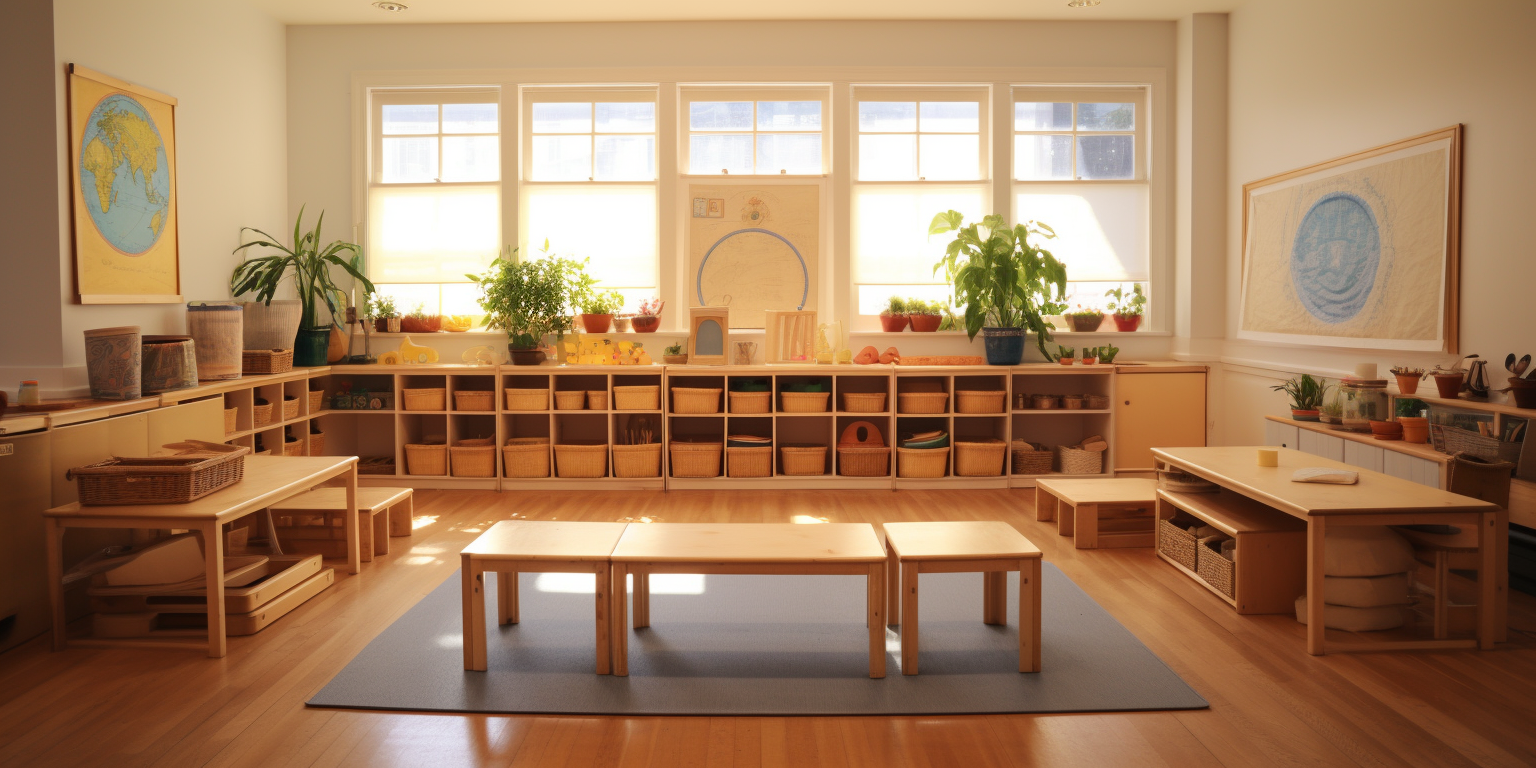
Key Montessori Equipment and Materials
Practical Life Materials: Building Life Skills
The Practical Life area is often the first introduction to the Montessori classroom for many young learners. Here, children engage in activities that mirror daily life tasks, fostering independence and coordination. Some essential materials include:
Pouring Exercises
- Using pitchers and cups, children practice pouring liquids or grains, refining their motor skills and hand-eye coordination.

- These frames, each focusing on a specific skill like buttoning, zipping, or lacing, help children master the art of dressing themselves.

- Using tweezers or spoons, children transfer small items from one container to another, enhancing their fine motor skills and concentration.

Sensorial Materials: Engaging the Senses
The Sensorial area is a feast for the senses. With a range of materials designed to refine auditory, visual, tactile, olfactory, and gustatory perceptions, children develop a keen awareness of their surroundings. Key materials include:
Color Tablets

- These tablets help children differentiate between various shades and hues, laying the foundation for color theory.
Geometric Solids

- These three-dimensional shapes introduce children to basic geometry, allowing them to feel and understand concepts like vertices, edges, and faces.
Sound Cylinders

- Filled with different materials, these cylinders produce varying sounds, helping children hone their auditory discrimination.
Mathematics Materials: Making Numbers Tangible
Montessori math is a hands-on, tangible experience. Through concrete materials, abstract concepts become accessible and engaging. Some fundamental materials are:
Number Rods

- These rods, varying in length and color, introduce children to the concept of quantity and the numerical sequence.
Spindle Boxes
- By matching spindles to numbered compartments, children gain a concrete understanding of numbers and their values.

Golden Beads
- Representing units, tens, hundreds, and thousands, these beads provide a tactile experience of the decimal system and basic arithmetic operations.

Language Materials: Cultivating Communication
Language is interwoven throughout the Montessori environment, but specific materials in the Language area focus on reading, writing, and grammar. Essential materials encompass:
Sandpaper Letters

- These tactile letters help children associate sounds with their corresponding symbols, paving the way for reading and writing.
Movable Alphabet

- Using individual letters, children construct words and sentences, experimenting with phonetics and spelling.
Reading Classification Cards

- These cards, with images and labels, enhance vocabulary and reading comprehension.
Cultural Materials: Exploring the World
The Cultural area broadens children's horizons, offering insights into geography, biology, history, and the arts. Key materials include:
Globe and Puzzle Maps

- These tools introduce children to continents, countries, and geographical features, fostering a global perspective.
Botany and Zoology Puzzles

- Through these puzzles, children learn about different plants and animals, understanding their anatomy and significance.
Earth Science Posters

- These visual aids introduce the science of the world, atmosphere, and space, providing a chronological understanding of how the world works.
The materials in a Montessori classroom are more than just educational tools; they are gateways to understanding the world. Thoughtfully designed and meticulously crafted, they cater to the child's innate curiosity, guiding them on a journey of exploration, discovery, and profound learning. As Maria Montessori aptly put it, "The hands are the instruments of man's intelligence." And it's through these materials, touched and manipulated by eager hands, that true intelligence blossoms.
Must-Have Accessories for a Montessori Classroom
Natural Elements: Bringing the Outdoors In
A Montessori classroom is not complete without elements from nature. Incorporating natural elements into the learning environment not only enhances its aesthetic appeal but also connects children to the world around them.
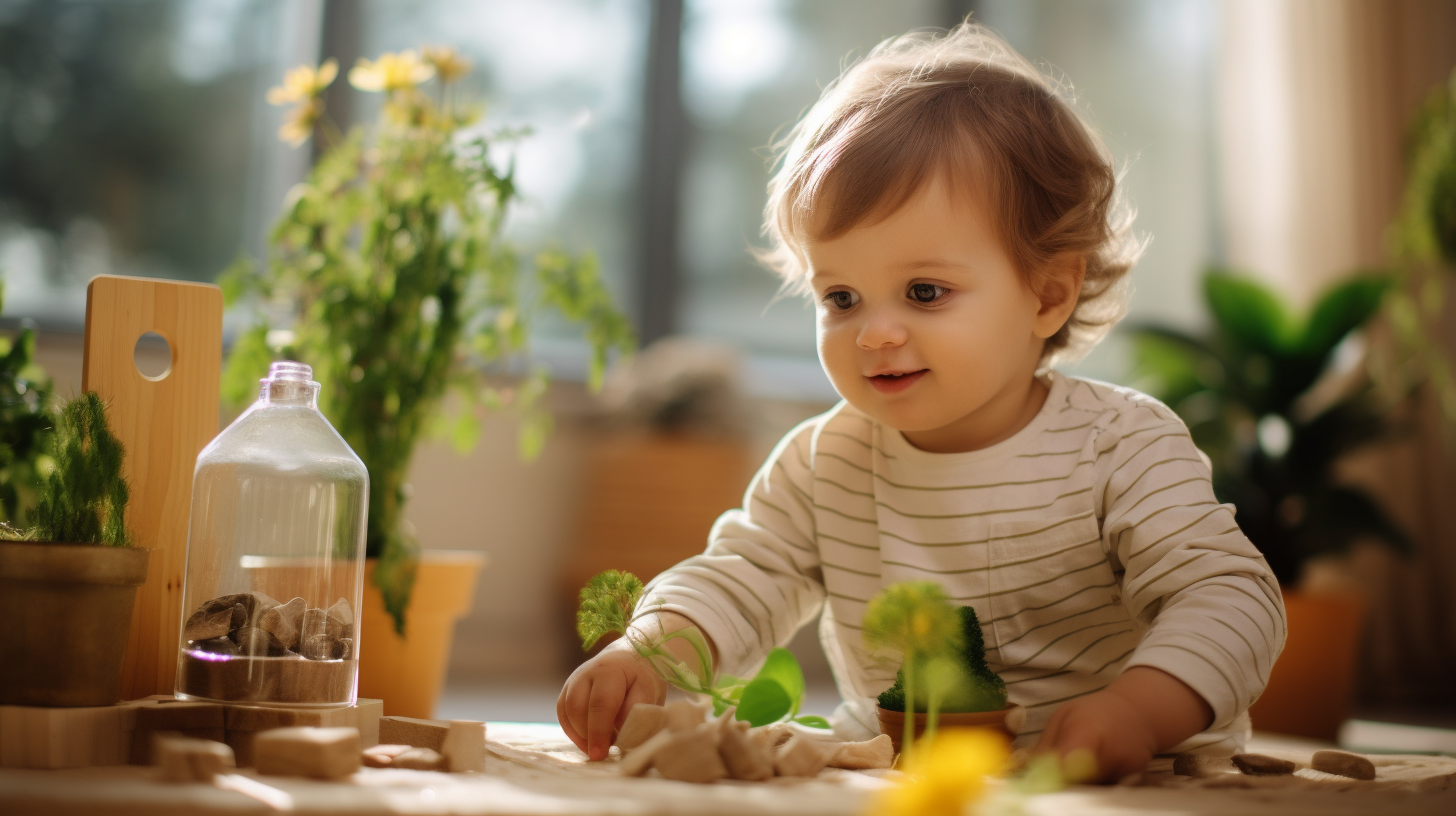
- Plants: Potted plants, whether large or small, add a touch of greenery, purify the air, and offer children the opportunity to learn about botany and responsibility as they care for them.
- Natural Light: Maximizing natural light is essential. It creates a warm and welcoming ambiance, regulates the body's internal clock, and has been linked to improved mood and productivity.
- Nature-Inspired Decor: Items such as wooden trays, stone counters, and seashell collections can be both functional and decorative, reinforcing the connection to the natural world.
Art Supplies: Fostering Creativity
Art plays a significant role in Montessori education, allowing children to express themselves, enhance their motor skills, and explore various mediums.
- Accessible Art Materials: Crayons, colored pencils, watercolors, and clay should be within easy reach, encouraging spontaneous creativity.
- Easels and Drawing Boards: These tools provide a dedicated space for painting and drawing, allowing children to immerse themselves in their artistic endeavors.
- Craft Supplies: Items like beads, threads, buttons, and fabric scraps enable children to engage in craft projects, enhancing their creativity and fine motor skills.
Music Corner: Tuning into Rhythms
Music is integral to holistic development, enhancing cognitive, motor, and social skills.
- Instruments: From tambourines and maracas to xylophones and keyboards, a variety of instruments lets children explore different sounds and rhythms.
- Egg Shakers: Egg shakers produce a gentle rhythmic sound, making them ideal for classroom music activities and enhancing sensory learning for students.
- Listening Equipment: A simple boombox is perfect for story time and can allow children to immerse themselves in various musical genres, from classical to folk.
Manipulatives: Engaging Hands and Minds
Manipulatives are tactile tools that make abstract concepts tangible, aiding in problem-solving, logical thinking, and motor skill development.
- Puzzles: Varied in complexity, puzzles enhance spatial awareness, concentration, and cognitive skills.
- Building Blocks: These versatile tools foster creativity, structural understanding, and motor skills.
- Pattern Activities: Using beads, pegs, or tiles, these activities enhance pattern recognition, sequencing skills, and hand-eye coordination.
Accessories in a Montessori classroom are not mere add-ons; they are integral components that enrich the learning experience. They cater to various facets of a child's development, ensuring that learning is not just academic but also artistic, musical, and tactile. These accessories, carefully chosen and thoughtfully integrated, ensure that the Montessori environment is a tapestry of experiences, each thread weaving a tale of discovery, exploration, and growth. In this holistic setting, children don't just learn; they thrive, developing skills and passions that will serve them for a lifetime.
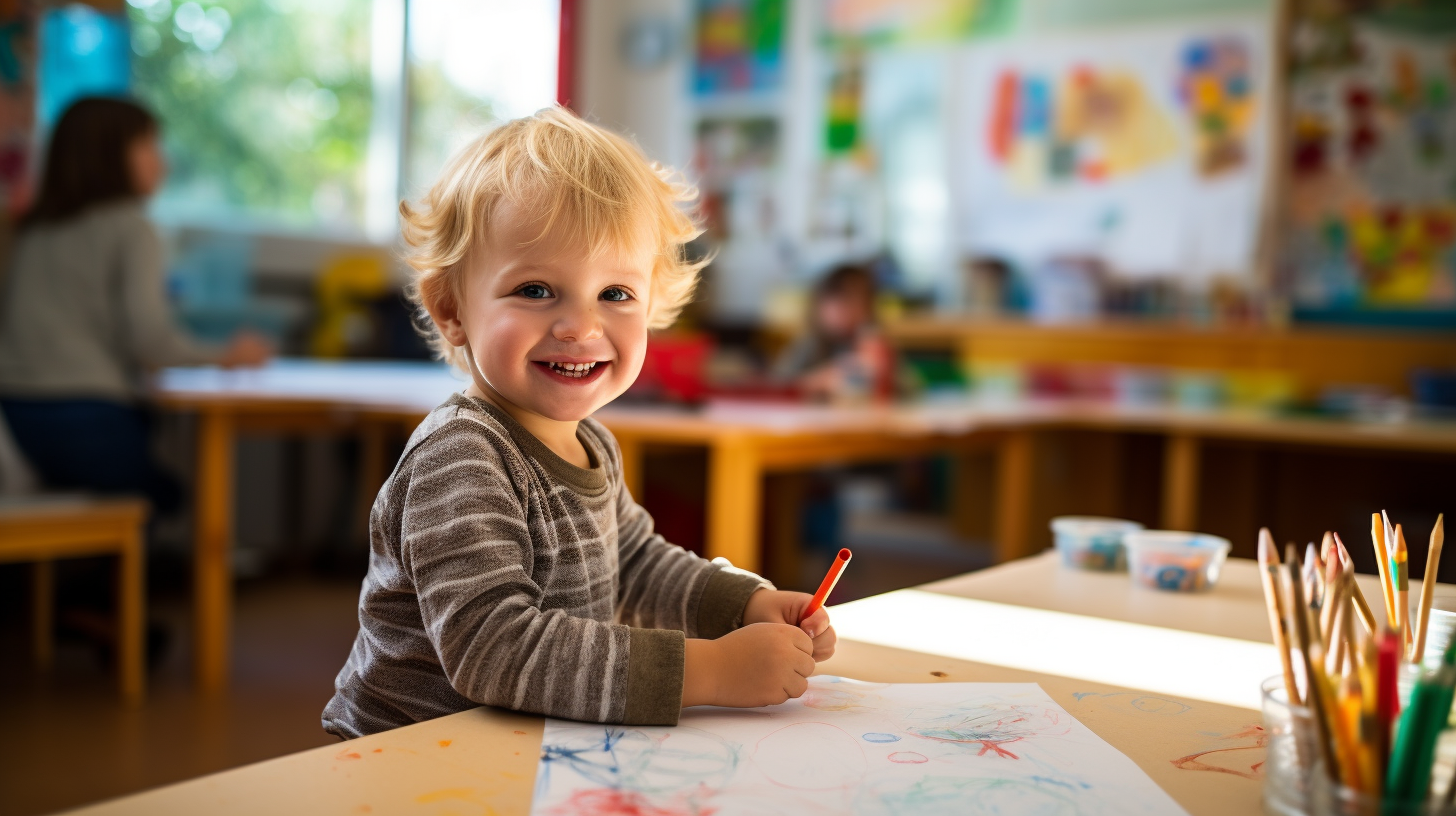
Incorporating Technology the Montessori Way
The Debate on Technology in Montessori Classrooms
The integration of technology in education is a topic of much debate, especially within Montessori circles. Traditionalists argue that screens and digital devices detract from the hands-on, tactile learning that Montessori emphasizes. However, many modern educators believe that when used judiciously, technology can complement the Montessori approach, offering tools and resources that enrich the learning experience.
It's essential to strike a balance. While the Montessori method's core remains hands-on exploration, we cannot ignore the digital age's realities. The key is to integrate technology in ways that align with Montessori principles: fostering independence, encouraging exploration, and supporting individualized learning.
Recommended Tech Tools and Their Effective Use
- Interactive Whiteboards: These tools can transform traditional lessons into interactive experiences. For instance, a geography lesson can come alive with interactive maps, allowing children to zoom in on countries, explore terrains, and even view real-time weather patterns.
- Tablet Applications: There are numerous Montessori-inspired apps available that offer activities in math, language, and sensorial exploration. These apps, when chosen carefully, can provide individualized challenges, adapting to each child's progress and pace.
- Digital Microscopes: These devices allow children to explore the microscopic world, from the veins of a leaf to the patterns on an insect's wing. It's a fusion of technology and nature, perfectly aligning with Montessori's emphasis on exploration and discovery.
- Audiobooks: These can be integrated into the reading nook, offering children a diverse range of stories, information, and perspectives. Listening to narratives enhances auditory comprehension, vocabulary, and introduces children to various cultures and ideas.
Setting Boundaries: Screen Time in a Montessori Environment
While technology offers numerous benefits, it's crucial to set boundaries. Screen time should be limited, ensuring that it doesn't overshadow hands-on activities. Teachers must also be vigilant, ensuring that the content aligns with Montessori principles and is age-appropriate.
Moreover, it's essential to educate children about the responsible use of technology. Discussions about digital etiquette, online safety, and the importance of taking regular screen breaks should be integral to the curriculum.
A Harmonious Blend
Incorporating technology into a Montessori classroom is not about replacing traditional materials or methods. Instead, it's about enhancing the learning experience, offering tools and resources that cater to today's digital natives. When used thoughtfully and responsibly, technology can be a valuable ally, seamlessly integrating with the Montessori approach to create a rich, diverse, and modern learning environment.
As we navigate the 21st century, it's clear that technology will continue to play a significant role in education. The challenge for Montessori educators is to harness its potential without compromising the method's core principles. By striking this balance, we can ensure that our classrooms remain relevant, dynamic, and true to Maria Montessori's vision of holistic, child-centered education.
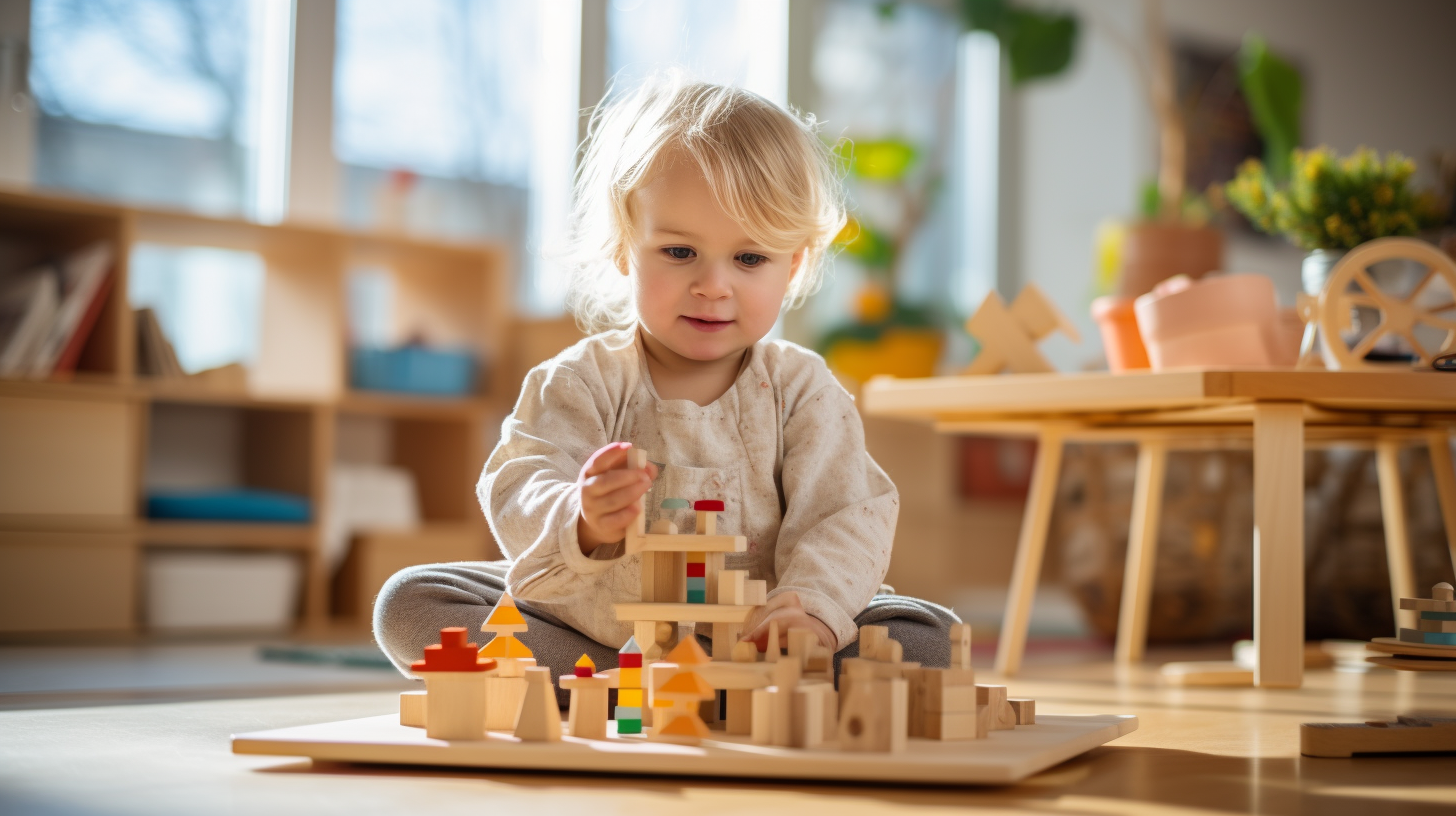
Maintaining and Updating the Montessori Environment
Regular Assessment of Materials and Their Condition
A Montessori classroom is a dynamic space, ever-evolving to meet the needs of its students. Regular assessment of materials is crucial to ensure they remain in good condition and are still relevant to the students' developmental stages. Worn-out or damaged materials can hinder the learning process and may even pose safety risks. Teachers should routinely inspect all items, repairing or replacing those that are no longer fit for use. This meticulous attention to detail ensures that the environment remains conducive to effective learning.
Keeping Up with the Changing Needs of Students
As children grow and progress, their needs and interests change. What captivates a three-year-old might not engage a five-year-old. Teachers must be attuned to these shifts, adapting the classroom environment accordingly. This might involve introducing more advanced materials, reorganizing the layout, or even updating the decor to reflect current themes and topics of interest. Regular feedback sessions, where children can express their interests and preferences, can also provide valuable insights, ensuring the classroom remains responsive and relevant.
Continuous Professional Development for Teachers
The Montessori method is not static; it evolves in response to new research, educational trends, and societal changes. As such, Montessori educators must be lifelong learners, continually updating their knowledge and skills. Attending workshops, seminars, and conferences can provide insights into the latest best practices, innovative materials, and emerging trends in Montessori education. By investing in their professional development, teachers ensure that they remain at the forefront of Montessori education, offering their students the best possible learning experience.
Embracing Feedback and Collaboration
A Montessori classroom is a community, with teachers, students, and even parents playing integral roles. Embracing feedback from all stakeholders can provide valuable perspectives on how to enhance the environment. Parents, with their intimate knowledge of their children's interests and needs, can offer insights that might not be apparent within the classroom's confines. Similarly, collaborating with fellow educators can lead to the sharing of resources, ideas, and strategies, enriching the classroom environment. By fostering a culture of open communication and collaboration, the Montessori classroom can continually adapt, grow, and thrive.
Maintaining and updating a Montessori classroom is not a one-time task but an ongoing commitment. It requires vigilance, adaptability, and a genuine passion for the Montessori philosophy. By regularly assessing materials, staying attuned to students' needs, investing in professional development, and embracing feedback, educators can ensure that their classrooms remain vibrant, engaging, and true to Maria Montessori's vision of a child-centered, holistic learning environment.
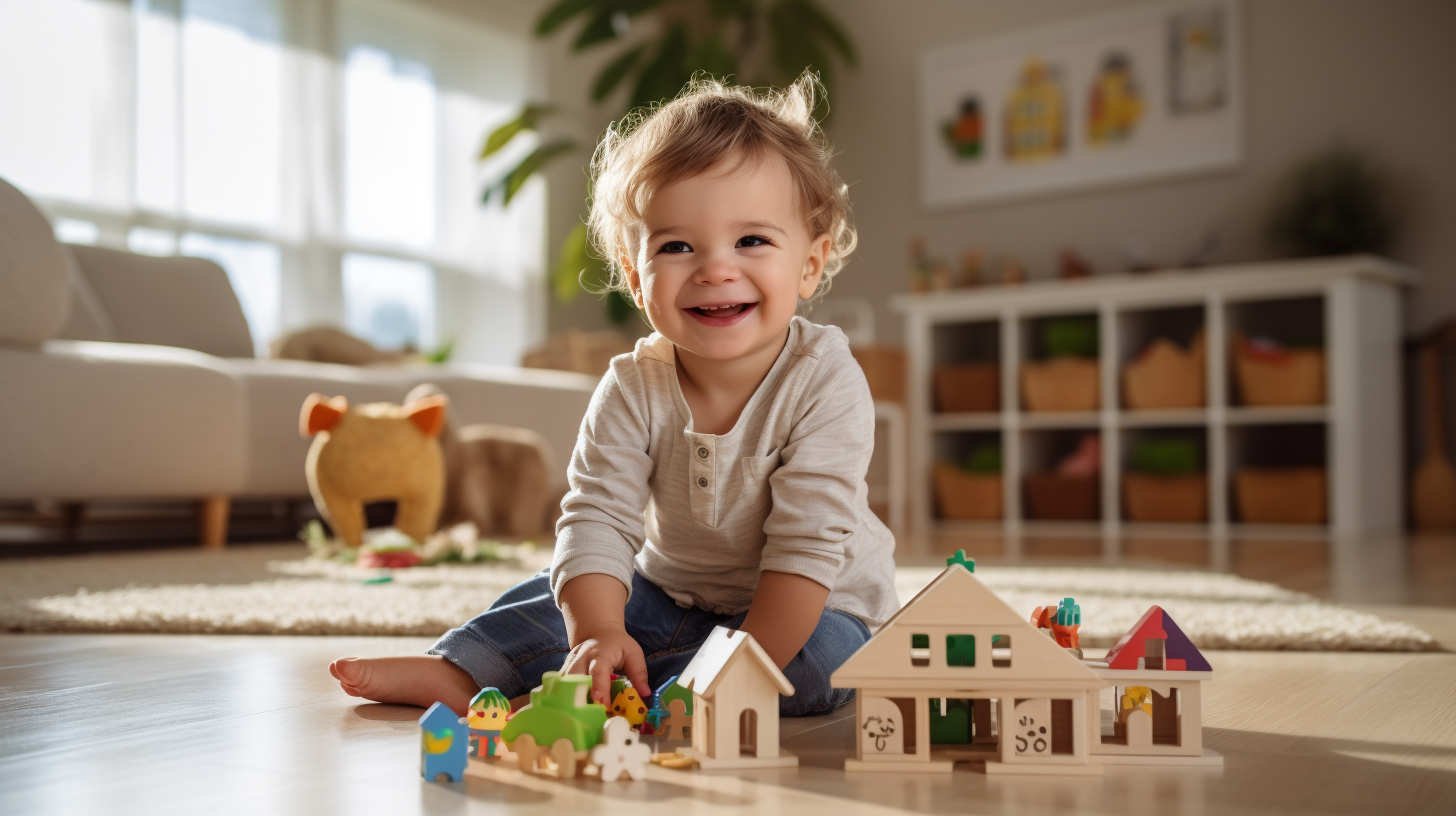
Conclusion
The Montessori classroom is more than just a physical space; it's a carefully crafted environment that nurtures the holistic development of every child. Rooted in the pioneering vision of Maria Montessori, this approach to education emphasizes independence, exploration, and a deep respect for the child's innate curiosity and potential. From the meticulously chosen furniture and materials to the integration of technology and continuous adaptation, every aspect of the classroom serves a purpose, facilitating a rich and diverse learning experience.
The lasting impact of a well-prepared Montessori environment is evident not just in academic achievements but in the broader spectrum of a child's development. Children nurtured in such environments often exhibit enhanced problem-solving skills, creativity, social awareness, and a genuine love for learning. They emerge as confident, compassionate, and critical thinkers, equipped to navigate the complexities of the modern world.
For educators, the journey of creating and maintaining a Montessori classroom is both a challenge and a reward. It demands dedication, continuous learning, and a deep-seated belief in the Montessori philosophy. But the rewards, seen in the form of children's growth, discoveries, and achievements, are immeasurable.
In a world that's rapidly changing, the principles of Montessori education remain a beacon of hope. They remind us of the timeless truth that every child is a unique individual, deserving of respect, understanding, and an environment that caters to their distinct needs and aspirations. As we look to the future, the Montessori classroom stands as a testament to the enduring power of child-centered, hands-on, and holistic education.
Additional Resources
For those inspired to delve deeper into the Montessori method, here are some recommended resources:
- Books:
- "The Absorbent Mind" by Maria Montessori
- "Montessori: A Modern Approach" by Paula Polk Lillard
- "The Montessori Method" by Maria Montessori
- Courses:
- Montessori Teacher Training programs offered by the Association Montessori Internationale (AMI) and the American Montessori Society (AMS).
- Online workshops and webinars on Montessori pedagogy and classroom management.
- Our Workbooks:
By immersing oneself in these resources, educators and parents alike can gain a deeper understanding of the Montessori philosophy, ensuring that they provide children with the best possible foundation for life.
